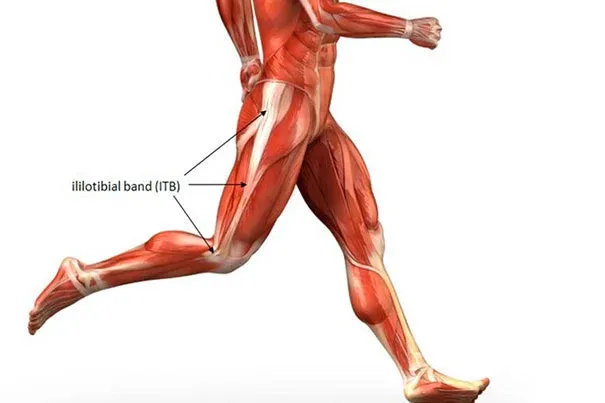- Joined
- Dec 11, 2012
- Messages
- 2,762
- Reaction score
- 709
This Week In Muay Thai: Khunsuklek vs Paeyim
In 2023, 18 year old Khunsuklek Boomdeksian went from blue chip prospect to star, going 5-0 with wins over Han Petchkiatpetch and the elite Pangtor Por.Lakboon. He’s a defensive slickster with a classic Femeu style. We covered his recent knockout of Han in September.
Paeyim Sor.Boonmerit went 5-3 in 2023, beating Rajadamnern 115lbs Champion, Praewprao, and avenging two of those losses. The one unavenged loss was to Kumandoi, arguably the best pound-for-pound fighter in Muay Thai right now. He’s an aggressive knee fighter who’s strong in the clinch.
Khunsuklek started fairly fast, using the early rounds to slam in hard kicks to Paeyim’s lead leg. He used his jab and lead leg teep to set the distance, keeping Paeyim still or pushing him back so that he could lay into the kicks. The first two rounds in Muay Thai are often a source of frustration to new viewers, as they don’t factor into scoring (unless there’s a knockdown), so they tend to be very slow.
I often find the early rounds frustrating as well, because they tend to be wasted throwaway rounds. Many styles benefit from attritional work that builds up and pays off over the course of the fight, and non-scoring early rounds offer a great chance to invest in strikes that take more out of the opponent than they take out of you, but a lot of fighters who could likely benefit from upping the workrate to the legs or body early just…don’t. So it was nice to see Khunsuklek making use of the early rounds to get in some damage to the legs. Once the scoring rounds began, the same setups and reads that let him hit the legs were used to hide higher-scoring body kicks.
Once Paeyim became more aggressive in the scoring rounds, Khunsuklek got to show off his brilliant timing and slick defense. Paeyim was looking to march him down and land knees on the inside, and once he started running into kicks, he began picking up the lead leg and hopping in behind it to throw his rear hand.
Khunsuklek did an excellent job timing Paeyim’s rhythm on the march, kicking the body when his lead leg touched down and he was unable to pick it up to block. When Paeyim tried to close in with the rear hand from kicking range, Khunsuklek would smoothly slide his lead leg in to pick off the exposed ribs.
The real highlight of the performance from Khunsuklek was his use of his knee and shin as a barrier preventing Paeyim from closing distance. After he timed a body kick, he would lay the kicking leg across Paeyim’s hips and push off, effectively closing out the exchange with his kick being the last clean strike.
f they ended up with a lot of distance between them, Khunsuklek would anticipate a right hand and slip outside it while thrusting the knee out to push Paeyim back, while in closer-range exchanges his shin would fall across both hips and block Paeyim from following up with knees. Muay Khaos often use kicks as a trigger to step into their knees, as a fighter retracting his kick is off-balance, able to be more easily pushed back, so the knee barrier was a great tactic to maximize the effectiveness of his kicks and neutralize Paeyim’s counters.
Later in the fight, Khunsuklek started retracting the knee barrier and tossing out elbows as Paeyim pushed forward:
The more Paeyim pursued, the more he ran into Khunsuklek’s kicks and elbows, his own offense largely neutralized throughout. One key to Khunsuklek’s Femeu dominance is that he wasn’t running, he was leading the dance off the backfoot. I’ve often discussed how Thais often feel comfortable with their back against the ropes, as the natural squaring of the stance that accompanies it works while with defending the higher-scoring lower body attacks in Muay Thai. But often today’s fighters take that too far and overuse giving ground, relying on it as a crutch to make up for a lack of eyes in close. Often these fighters go to Japan for a kickboxing match only to end up being quickly backed to the ropes and dusted with body hooks.
In Golden Age fights, the fighters consistently stood closer together than they do in today’s Muay Thai. The master Femeus of the Golden Age gave only as much ground as needed to avoid an attack without surrenduring their own positional advantage or offensive output. Khunsuklek fought in a way reminiscent of the Golden Age spacing. Paeyim was pursuing, but every step forward carried the threat of running into a kick, and when he reached out to counter Khunsuklek would dissappear just beyond his reach, close enough to counter him. When he tried to storm forward and physically push him to the ropes, Khunsuklek’s shin would meet him or he’d be intercepted in the clinch. Paradoxically, the best outfighters like Khunsuklek are judicious about when and how they give ground.
Khunsuklek’s ability to stand his ground and back Paeyim off also allowed him to deal with his clinch well. He did a great job of controlling the entries, pummeling inside to a position he could use to escape before Paeyim got a strong grip. The main counter-clinch tactic was forcing his way to inside bicep control, preventing Paeyim from taking a controlling inside grip, and shoving him away.
Khunsuklek would transition from long-range kicks to a high guard or cross-armed guard with both hands positioned close to his head as Paeyim stormed into the pocket. The head position caused Paeyim’s swings to naturally fall outside his hands, allowing him to immediately take an inside grip on the bicep. After shoving him off he’d punctuate the exchange with a kick or a snazzy jumping knee. He’d also weave his arm to the inside immediately after landing an elbow.
When Paeyim did get close to locking around the head, Khunsuklek had an effective counter tactic:
Continued Here...
Great breakdown man, thanks! I watched the fight last week and couldn't remember anything I'd seen. your reviews always help putting a fight into its context and placing it into a broader narrative.
That Khunsueklek vs. Kumandoi fight is inching closer but right now I guess it's too soon for Khunsueklek. The way Kumandoi handled Pangtor was different than when the younger guys fight among themselves (even though Khunsueklek KOed Pangtor!)



